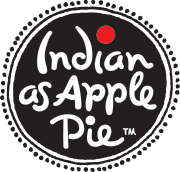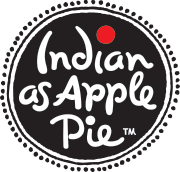October 04, 2023


If you saw me slurping this bowl of the dal you would likely lose all respect. Though, if you make this recipe, I have a feeling you'll understand why I use the word slurp. This dal is truly that delicious. Even my husband, who loves dal, but groans when I tell him that's what's for dinner, went back for three servings and cleaned out the pot. It's what I always say happens with a good dal. It sounds boring on paper, but when you sit down with it and actually start eating it, you absolutely cannot get enough of it. It's at once delicious, comforting, and nutritious. It's hard to believe that something that tastes this good can be so good for you.
Part of what is so delicious is the dal itself. Remember, dal refers to a cooked legume - a pea, lentil, or bean - anything that grows in a pod. These legumes often come in many forms. This one that I am highlighting here is originally from the whole green moong dal, which is found most everywhere. But, because the skin has been removed and it has been split, it cooks up much faster and is more easily digestible. It is rarely found on mainstream market shelves in this form and why I offered it as part of my product line. It is often confused with the orange-colored lentils that are found everywhere, but that are a different legume entirely.
This yellow one is called moong and is actually a bean. The orange one comes from a true lentil (looks flat and round) called masoor. It's delicious as well, but it's a different taste profile. But, because it cooks up with the same amount of water and cook time as this one, you can use it in place of the split yellow moong.
I recommend that you take the time to purchase this yellow moong, though. I promise you will thank me later. There is a reason why it's the dal that we eat the most in our Punjabi homes - at least once a week if not more. It is also the dal that is most mixed with rice to create a porridge called kitchari, which is our version of chicken noodle soup - it's made and eaten when we have a stomach ache and need a lighter meal. The reason is the cook time - it's one of our fastest-cooking dals. On the stovetop, it takes 40 minutes - no soaking required. In an Instant Pot, I got it down to a 3-minute cook time. And, note the amount of water we use. It's 1 cup of dal to 6 cups of water. Sounds like a lot, but trust me. It's absolutely perfect in the end.
The key difference in this recipe is that I added a bit more onion than normal and added dried fenugreek leaves to really give you a beautifully robust taste profile. Please scroll below to see all the fun things we've added to the website from Spice Kits to Diwali Gifts for your college kids.
Stovetop: Yellow Split Moong Dal with Methi
1 cup split moong dal (looks yellow, no need to soak), wash
6 cups water
3 tablespoons oil or ghee
1 pinch hing (asafoetida)
1/2 teaspoon turmeric powder
2 teaspoons cumin seeds
1 medium yellow or red onion, finely minced (3/4 cup)
1 - 2 inch piece ginger, minced (2 heaping tablespoons)
4 cloves garlic, minced
1 - 6 Thai or serrano chiles, stems removed and thinly sliced
2 tablespoons kasoori methi (dried fenugreek leaves) lightly hand-crushed
2 teaspoons garam masala
1 teaspoon coriander powder
2 teaspoons red chile powder
1 tablespoon salt
1. In a roomy 3 or 4-quart pot, bring the dal and water to a boil. Reduce the heat and simmer partially covered for 40 minutes. Once cooked, turn the heat off, cover completely, and leave on the same burner. The dal may foam slightly while boiling. Not to worry, that will eventually go away. If it seems excessive, just skim it off the top and discard the foam.
2. In a small, shallow pan, heat the oil or ghee over medium-high heat. Once warm, add the hing, turmeric, and cumin seeds. Cook until the seeds are reddish brown, about 40 seconds. Stir.
3. Add the onion and stir. Cook until brown, about 3 minutes.
4. Add the ginger, garlic, and fresh chiles. Stir and cook about 1 minute.
5. Add the kasoori methi and cook for 1 minute. Add the garam masala, coriander, and red chile. Stir and cook for 1 minute. Turn the heat off.
6. Transfer this tarka (spice mixture) to the pot of dal. To get all of the delicious flavor out and deglaze the pan, pour a large spoon of dal into the pan, stir and scrape all of the deliciousness out of the pan and add to the pot.
7. Add the salt and stir. Bring the dal to a boil and simmer another 2 minutes until everything pulls together. Serve with rice or Indian bread like roti or naan. You can also eat this as a soup. Once a dal cools or is refrigerated, it's natural for it to thicken up. Just add a little water before heating to loosen it up and adjust the salt accordingly. The consistency should be very thin and soupy.
Watch me make it! Subscribe to my Youtube channel here so you never miss another video.
Want to give a recipe a try, but don't want to invest in all of the spices quite yet? Try our new SPICE KITS.
Diwali is around the corner on November 12th. Want to send something special to that kiddo that left for college and can't be home to celebrate? Consider our Diwali College Gift Box. Complete with a battery operated diya that they can safely light in their dorm room, Indian As Apple Pie chutney, a jar of our chaat masala for popcorn, snacks, and even a deck of cards. Diwali is complete! Click here to get your order in before October 31st.

Comments will be approved before showing up.

